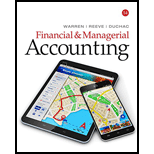
a)
Product pricing: Product pricing is the method used for fixing the price for the products sold or the services offered to the consumers.
Product cost pricing: Product cost pricing is a pricing technique which sums up the costs involved in the production of the product alone and the markup is added to the sum.
Total cost pricing: Total cost pricing is a pricing technique which sums up all the costs involved in the production of the product and the markup is added to the sum.
Total Variable Cost: Total variable cost refers to the costs involved in the production of the product.
Markup Percentage: The markup percentage is the percentage of additional costs added to the product cost to get the selling price of the product.
Selling Price: Selling price is calculated by summing up the product cost per unit and the per unit markup cost
To Determine: The desired profit of Company NG.
a)
Explanation of Solution
Desired Profit: Company NG aims at earning a profit of 10% of the total investment made of $600,000.
Calculate the desired profit of Company NG.
Hence, the desired profit of Company NG is $60,000.
b)
On the basis of product cost concept, for Company NG
- i. Cost per unit
- ii. Markup percentage
- iii. Selling price of halogen lights
b)
Explanation of Solution
Product cost pricing: Product cost pricing is a pricing technique which sums up the costs involved in the production of the product alone and the markup is added to the sum.
i)
Calculate the cost per unit of halogen light.
| Variable Cost (1) | $520,000 |
| Fixed Cost | $180,000 |
| Total | $700,000 |
| Divide by: Number of units | 10,000 |
| Cost per unit | $70 |
Hence, the cost per unit of halogen light is $70.
Working Note:
Calculate the variable cost.
c)
On the basis of total cost concept, for Company NG
- i. Cost per unit
- ii. Markup percentage
- iii. Selling price of halogen lights
c)
Explanation of Solution
Total cost pricing: Total cost pricing is a pricing technique which sums up all the costs involved in the production of the product and the markup is added to the sum.
i)
Calculate the cost per unit of halogen light.
| Variable Cost
|
$590,000 |
| Fixed Cost
|
$260,000 |
| Total | $850,000 |
| Divide by: Number of units | 10,000 |
| Cost per unit | $85 |
Hence, the cost per unit of halogen light is $85.
d)
On the basis of variable cost concept, for Company NG
- i. Cost per unit
- ii. Markup percentage
- iii. Selling price of halogen lights
d)
Explanation of Solution
Total Variable Cost: Total variable cost refers to the costs involved in the production of the product.
e)
To Comment: On any other considerations that would influence the price of halogen light.
e)
Explanation of Solution
Company NG should consider the following things before determining the price of halogen light.
- The general price of halogen lights in the market, the competitive price must be considered.
- The price should be revised in short run instead of fixing a price for long run.
f)
i)
To Prepare: The differential analysis of Company NG, for the proposed offer to either accept or reject it.
f)
i)
Explanation of Solution
Prepare the differential analysis for Company NG for the given alternatives.
| Differential Analysis of Company NG | |||
| Reject Order (Alt 1) or Accept Order (Alt 2) | |||
| September 05 | |||
| Reject Order (Alternative 1) | Accept Order (Alternative 1) | Differential Effect on income | |
| Revenues | $0 | (2) $91,200 | $91,200 |
| Costs | |||
| Variable |
$0 | (3) (-) $83,200 | (-) $83,200 |
| Income (loss), per unit | $0 | $8,000 | $8,000 |
Table (1)
The differential analysis of Company NG shows a profit of $8,000 on accepting the offer, hence the offer should be accepted.
Working Note:
Calculate the revenue from the sale of the halogen lights.
Calculate the variable manufacture cost.
Want to see more full solutions like this?
Chapter 24 Solutions
Financial & Managerial Accounting
- A customer owes $4,000. The company expects 5% to be uncollectible. What is the bad debt expense?A. $100B. $150C. $200D. $250arrow_forwardI need help with this solution and accountingarrow_forwardWhat does the term "liquidity" refer to in finance? A) The ability to convert assets into cash quickly without significant loss of value B) The ability to increase company profits C) The level of debt in the company D) The diversity of the investment portfolioarrow_forward
- Need help! What is the inventory turnover ratio if cost of goods sold is $90,000 and average inventory is $15,000?A. 3B. 6C. 9D. 12arrow_forwardCan you show me the correct approach to solve this financial accounting problem using suitable standards?arrow_forwardSolve this question and accountingarrow_forward
- What is the inventory turnover ratio if cost of goods sold is $90,000 and average inventory is $15,000?A. 3B. 6C. 9D. 12arrow_forwardCan you solve this general accounting problem with appropriate steps and explanations?arrow_forwardA firm’s total assets are $200,000, and liabilities are $120,000. What is the equity?A. $80,000B. $100,000C. $120,000D. $200,000arrow_forward
 Managerial Accounting: The Cornerstone of Busines...AccountingISBN:9781337115773Author:Maryanne M. Mowen, Don R. Hansen, Dan L. HeitgerPublisher:Cengage Learning
Managerial Accounting: The Cornerstone of Busines...AccountingISBN:9781337115773Author:Maryanne M. Mowen, Don R. Hansen, Dan L. HeitgerPublisher:Cengage Learning Principles of Cost AccountingAccountingISBN:9781305087408Author:Edward J. Vanderbeck, Maria R. MitchellPublisher:Cengage Learning
Principles of Cost AccountingAccountingISBN:9781305087408Author:Edward J. Vanderbeck, Maria R. MitchellPublisher:Cengage Learning Managerial AccountingAccountingISBN:9781337912020Author:Carl Warren, Ph.d. Cma William B. TaylerPublisher:South-Western College Pub
Managerial AccountingAccountingISBN:9781337912020Author:Carl Warren, Ph.d. Cma William B. TaylerPublisher:South-Western College Pub Financial And Managerial AccountingAccountingISBN:9781337902663Author:WARREN, Carl S.Publisher:Cengage Learning,
Financial And Managerial AccountingAccountingISBN:9781337902663Author:WARREN, Carl S.Publisher:Cengage Learning,



